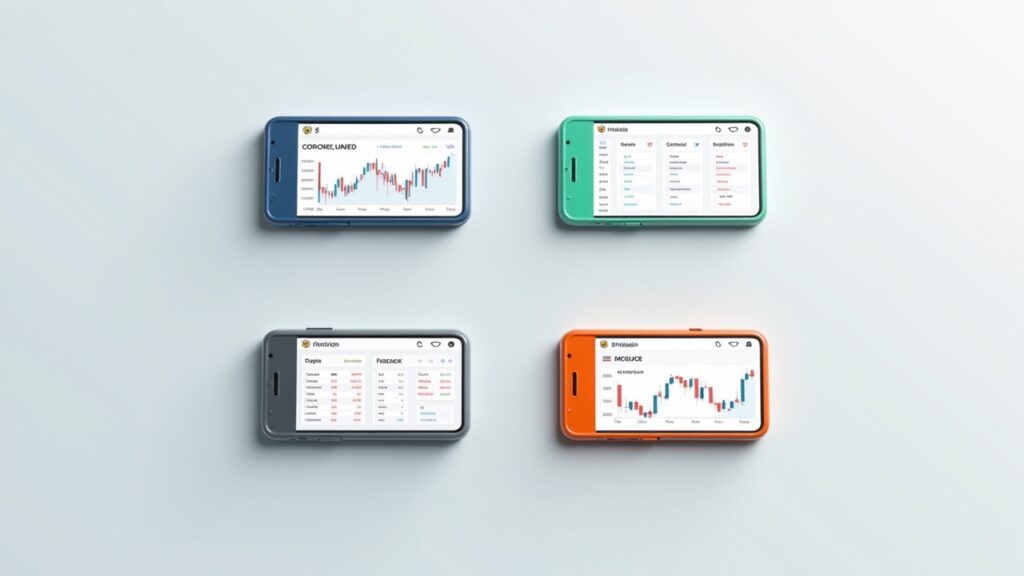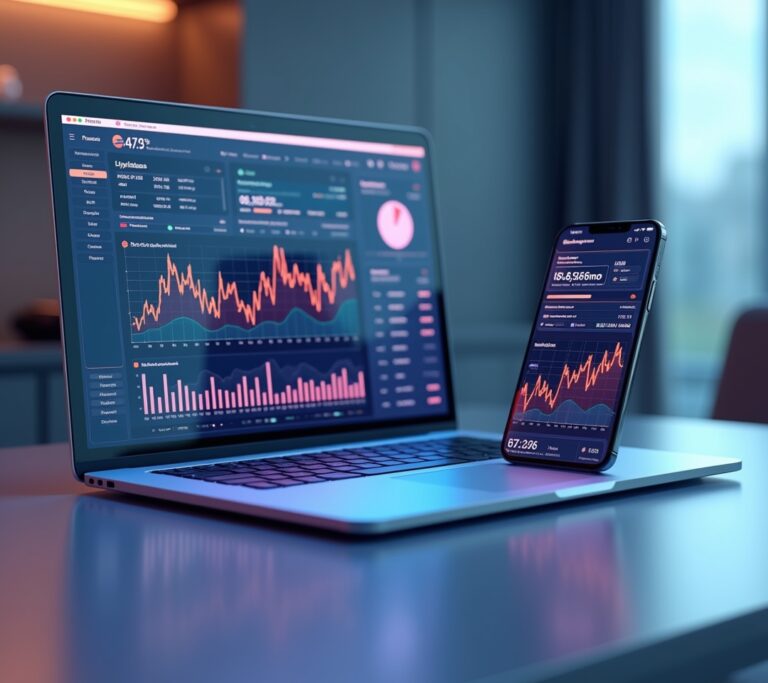Advertisements
Did you know that nearly 60% of millennials are now investing through mobile apps? When I first started investing back in 2019, I made the rookie mistake of opening accounts with five different brokers. Talk about overwhelming!
After years of trial and error (and honestly, some pretty embarrassing losses), I’ve finally figured out which investment apps actually deliver. Moreover, I’ve learned that choosing the right app can literally save you thousands in fees over time.
So let me share what I’ve discovered about the best investment apps currently available. Trust me, this knowledge comes from real experience – including that time I accidentally sold my entire portfolio instead of just one stock!
Why Investment Apps Have Changed Everything

Remember when investing meant calling a broker or visiting a physical office? Yeah, those days are long gone. Furthermore, modern investment apps have democratized the whole process.
I still remember my dad’s shocked face when I showed him I could buy stocks while waiting in line at Starbucks. Additionally, these apps have made investing accessible to people who thought they needed thousands to get started. Some apps let you begin with literally just a dollar!
However, the real game-changer is how these platforms educate new investors. Most importantly, they provide research tools, educational content, and even practice accounts where you can learn without risking real money.
Top Investment Apps I Actually Use (And Why)
After testing probably two dozen apps over the years, I’ve narrowed it down to a few favorites. Each one serves a different purpose in my investment strategy.
Robinhood: The Gateway Drug of Investing
Let’s start with Robinhood – the app that basically started this whole revolution. Although it’s gotten some bad press (remember the GameStop fiasco?), it’s still incredibly user-friendly for beginners.
The interface is clean and simple. No confusing charts or overwhelming data. Plus, they offer commission-free trades on stocks, ETFs, and even cryptocurrencies.
That being said, I’ve noticed their customer service can be lacking. Once, I had an issue that took three days to resolve through email. Nevertheless, for someone just starting out, it’s hard to beat their simplicity.
Fidelity: The Grown-Up Choice
When I decided to get serious about retirement planning, I moved most of my long-term investments to Fidelity. Subsequently, I discovered why they’ve been around for decades – they know their stuff!
Their research tools are absolutely incredible. Furthermore, they offer fractional shares, meaning you can invest in expensive stocks like Amazon with just a few bucks. The mobile app might not win any design awards, but it’s reliable and feature-packed.
One thing that really impressed me was their customer service. When I called with questions about rolling over my 401(k), the rep spent 45 minutes explaining everything. No rush, no sales pressure.
Vanguard: The Index Fund Paradise
If you’re into index fund investing (and honestly, most people should be), Vanguard is basically the holy grail. Their expense ratios are among the lowest in the industry.
I’ll admit, their app isn’t the prettiest. Actually, it looks like it was designed in 2010. However, when you’re saving 0.5% annually on fees compared to other brokers, who cares about fancy graphics?
Features That Actually Matter
Through my investing journey, I’ve learned that certain features make a huge difference. Consequently, here’s what I always look for in an investment app:
- Fractional shares (because not everyone has $3,000 for one Amazon share)
- Automatic investing options
- Tax-loss harvesting tools
- Educational resources that don’t feel like reading a textbook
- Real-time market data
- Strong security features (two-factor authentication is a must!)
Additionally, I’ve found that having a good desktop platform matters too. Sometimes you need that bigger screen for research. Most importantly, make sure the app offers the types of investments you’re interested in.
Mistakes to Avoid (Learn From Mine!)
Let me save you from some painful lessons I learned the hard way. First off, don’t chase the latest trendy app just because your coworker mentioned it. I once switched to a new platform that promised “revolutionary AI trading” – lost $500 before realizing it was mostly hype.
Moreover, always check the fee structure carefully. Some apps advertise “free trading” but then nickel-and-dime you with account fees, transfer fees, and hidden costs. Subsequently, I now read all the fine print before committing.
Another mistake? Getting too many apps was confusing and made tax season a nightmare. Stick with one or two platforms max.
Your Next Steps in the Investment Journey

Choosing the right investment app is just the beginning of your financial journey. Therefore, take time to explore the educational resources these platforms offer. Start small – maybe $50 or $100 – and learn as you go.
Remember, the best investment app is the one you’ll actually use consistently. Additionally, don’t let analysis paralysis stop you from starting. I wasted two years “researching” before finally taking the plunge!
Want to learn more about building wealth and making smart financial decisions? Check out other helpful guides at Plan Wealth – we’re all about making complex financial topics simple and actionable. Because honestly, your future self will thank you for starting today!




[…] to level up your money game? Check out more practical financial tips and real-world experiences at Smart Start. We’re all figuring this out together, one financial decision at a […]
[…] to dive deeper into smart investing strategies? Check out more practical finance tips at Smart Start – we’ve got tons of articles to help you navigate your financial journey […]